-
About
- About Listly
- Community & Support
- Howto
- Chrome Extension
- Bookmarklet
- WordPress Plugin
- Listly Premium
- Privacy
- Terms
- DMCA Copyright
- © 2010-2025 Boomy Labs
 Logan Lynn Roberts
Logan Lynn Roberts
Listly by Logan Lynn Roberts
The 23 important claims detailed by the Google Adheat Patent which will change the face of Social Media Marketing & Influence Marketing forever!! #adheat #googleadheat
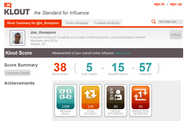
1/ A computer-implemented method comprising:
receiving at a server information indicating activity levels of users of a computer-implemented social network or acquaintance relationships of the users on the computer-implemented social network;
generating by the server influence scores for the users based on the received information;
determining that a difference between a first influence score of a propagating user and a second influence score of a recipient user is greater than a threshold; and
recursively propagating, by the server until an end condition is met, an ad through the computer-implemented social network between users having an acquaintance relationship by transmitting the ad from a propagating user to a recipient user, wherein the end condition comprises, for a particular propagating user, each candidate recipient user with an acquaintance relationship with the particular propagating user having either: i) an influence score that is greater than an influence score of the particular propagating user or ii) already received a transmission of the ad.

2/ The method of claim 1, wherein the recipient user acts as a second propagating user after the ad has been transmitted to the recipient user.

3/ The method of claim 1, wherein the end condition further comprises, for a particular propagating user, receiving an indication that user the particular propagating user has declined an opportunity to propagate the ad through the computer-implemented social network.

4/ The method of claim 3, wherein the indication is generated by a client associated with the particular propagating user in response to an action expressing disinterest in the ad.

5/ The method of claim 3, further comprising replacing by the server the ad with a substitute ad after the user declines to interact and recursively propagating by the server the substitute ad through the social network between users having an acquaintance relationship.

6/ The method of claim 1, wherein the end condition further comprises a time period for the ad has expired.
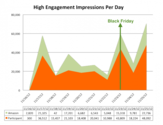
7/ The method of claim 1, wherein the end condition further comprises a target number of propagations for the ad has been met.

8/ The method of claim 1, wherein the end condition further comprises a budget for the ad has been exhausted.

9/ The method of claim 1, further comprising providing by the server the propagating user with an opportunity to interact with the ad.

10/ The method of claim 9, further comprising providing by the server compensation to the propagating user when the propagating user elects to propagate the ad by interacting with the ad.

11/ The method of claim 10, further comprising calculating by the server an amount of compensation based on a number of recipient users to which the ad is propagated.

12/ The method of claim 9, wherein the opportunity to interact is provided to the propagating user in a gadget located in the propagating user's display of the computer-implemented social network.

13/ The method of claim 9, wherein the propagating user interacts with the ad by adding a comment regarding the ad or explicitly specifying one or more users to receive the ad based on an interaction with the ad.
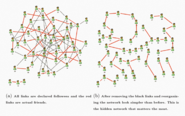
14/ The method of claim 1, further comprising obtaining by the server data related to propagation of the ad through the computer-implemented social network from the propagating user and each recipient user.
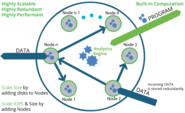
15/ The method of claim 14, wherein the propagation data includes information related to a number of users to view the ad, a number of users to interact with the ad, or a number of users to propagate the ad.
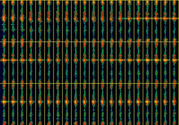
16/ The method of claim 1, wherein recursively propagating the ad through the computer-implemented social network further comprises determining the threshold by applying a heat diffusion model to the first influence score and the second influence score, the heat diffusion model determining a path by which the ad can propagate through the computer-implemented social network.

17/ A system for propagating an ad across users of a social network, comprising:
one or more servers comprising one or more processors that are programmed to provide:
an interface to the one or more of servers to receive information indicating activity levels of users of a social network or acquaintance relationships of the users on the social network;
a means for generating influence scores for the user based on the received information; and
a recursive propagation module to:
determine that a difference between a first influence score of a propagating user and a second influence score of a recipient user is greater than a threshold; and
recursively propagate, until an end condition is met, an ad through the social network between users having an acquaintance relationship by transmitting the ad from a propagating user to a recipient user, wherein the end condition comprises, for a particular propagating user, each candidate recipient user with an acquaintance relationship with the particular propagating user having either: i) an influence score that is greater than an influence score of the particular propagating user or ii) already received a transmission of the ad.

18/ The system of claim 17, wherein the recursive propagation module permits the recipient user to act as a second propagating user after the ad has been transmitted to the recipient user.

19/ The system of claim 17, wherein the propagation module terminates the recursive propagation of the ad through the social network.

21/ The method of claim 20, further comprising generating the influence score for the first user and the influence scores of the second users of the computer-implemented social network connected to the first user by an acquaintance relationship.

22/ The method of claim 21, wherein generating an influence score for a user comprises calculating an amount of influence the user has over other users of the computer-implemented social network based on the user's acquaintance relationships and an activity level of the user on the computer-implemented social network.

23/ The method of claim 20, wherein the input from the first user comprises an indication the first user desires the ad to be propagated to the second users of the social network.
